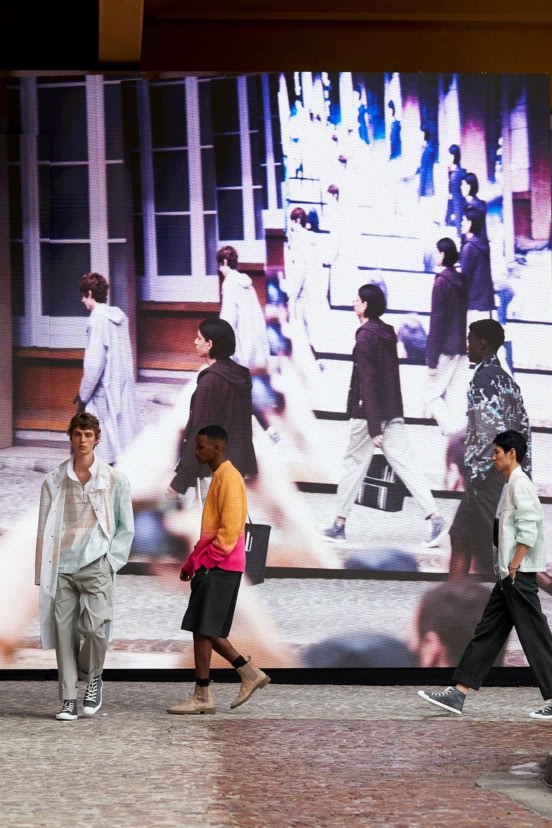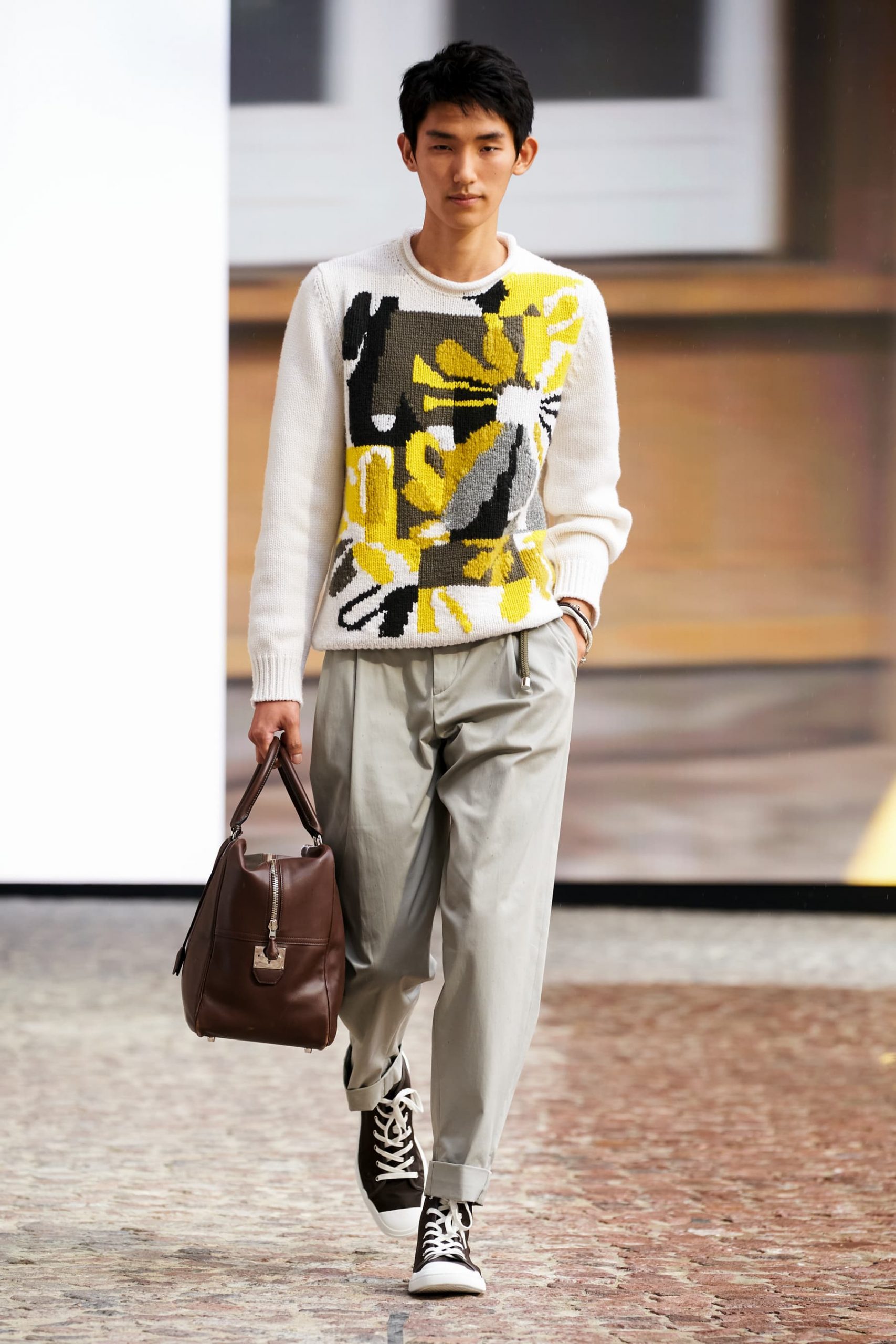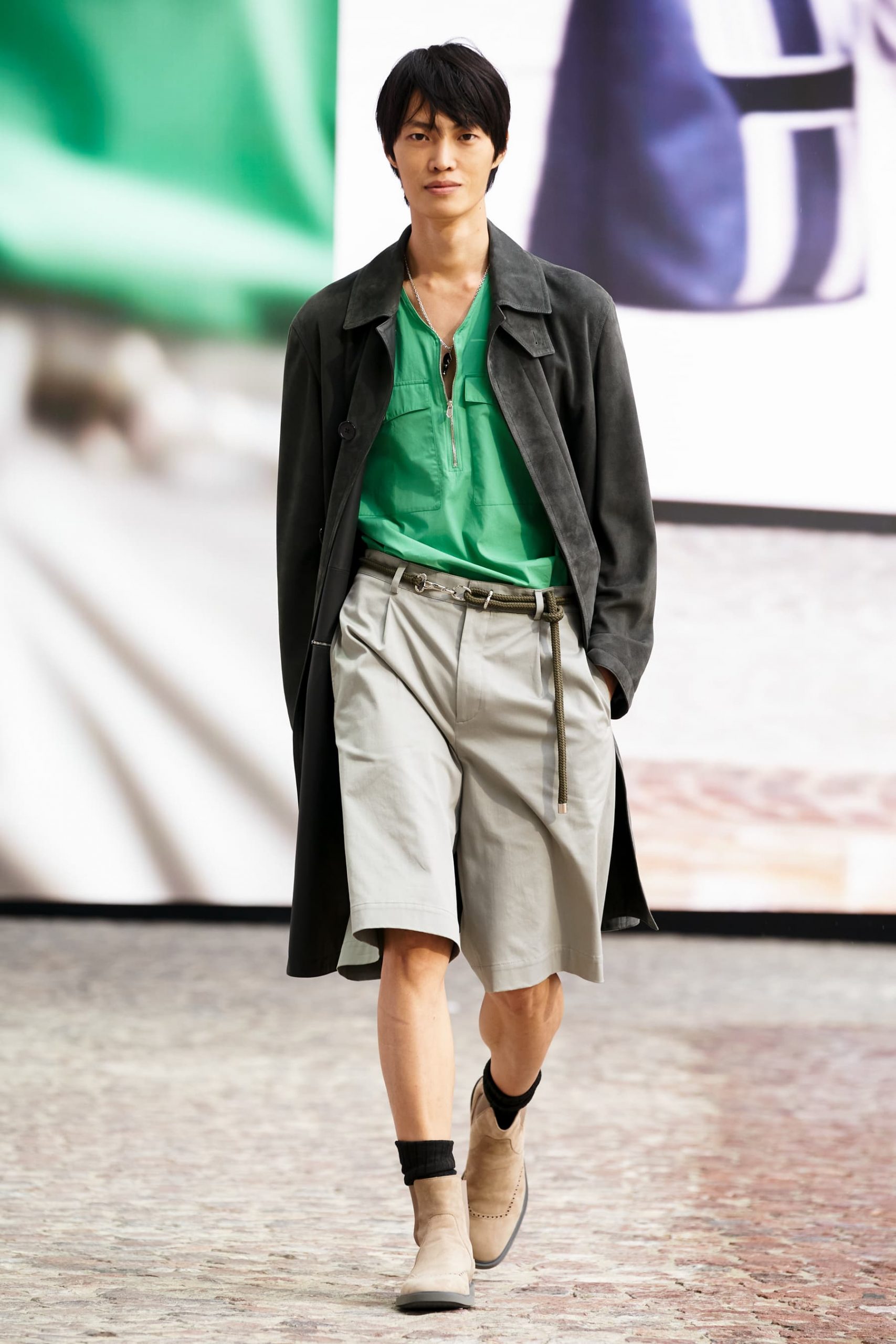Review of Hermès Spring 2022 Men’s Fashion Show
Giant High Definition Monitors Framed A Focused Collection Steep in Dynamic Casualness and Innovative Materials
By Long Nguyen
In one of the few live shows this season in Paris, Hermès staged its men’s spring 2022 show at the usual Mobilier national in the 14th, in the early afternoon rather than at the regular time of eight P.M. on a Saturday night.
Designed by the experimental theatre director Cyril Teste, who has worked with the house on two of the previous men’s shows, one in Pantin and the second in the staircase of this location, the triangular show staging platform and decoration was bare bone in the courtyard of the Mobilier national. Intentional to enhance the viewing experience, Teste deployed a range of giant high-definition screen monitors of different sizes placed around the square entrance area.
“We wanted to find a new way of putting on a fashion show, which tends to be unchanging. Here, there will be no generalized arrangement for all the models for the models to follow but rather individualized arrangements for each and every model, with a camera capturing faces, movement, detail – on the fly. Each model will be filmed in a unique, customized style,” Cyril Teste explained the process of bringing a sense of multi-dimension to the show and aligning the monitors and unique cameras with the building’s architectural layout.
In the flesh and on-screen simultaneously, the focus is on the details, often invisible. These elegantly streamline spring 2022 men’s clothes, striped more or less to their most essential component, but still maintain the luxury standards emanated from their materials and expert fabrication.
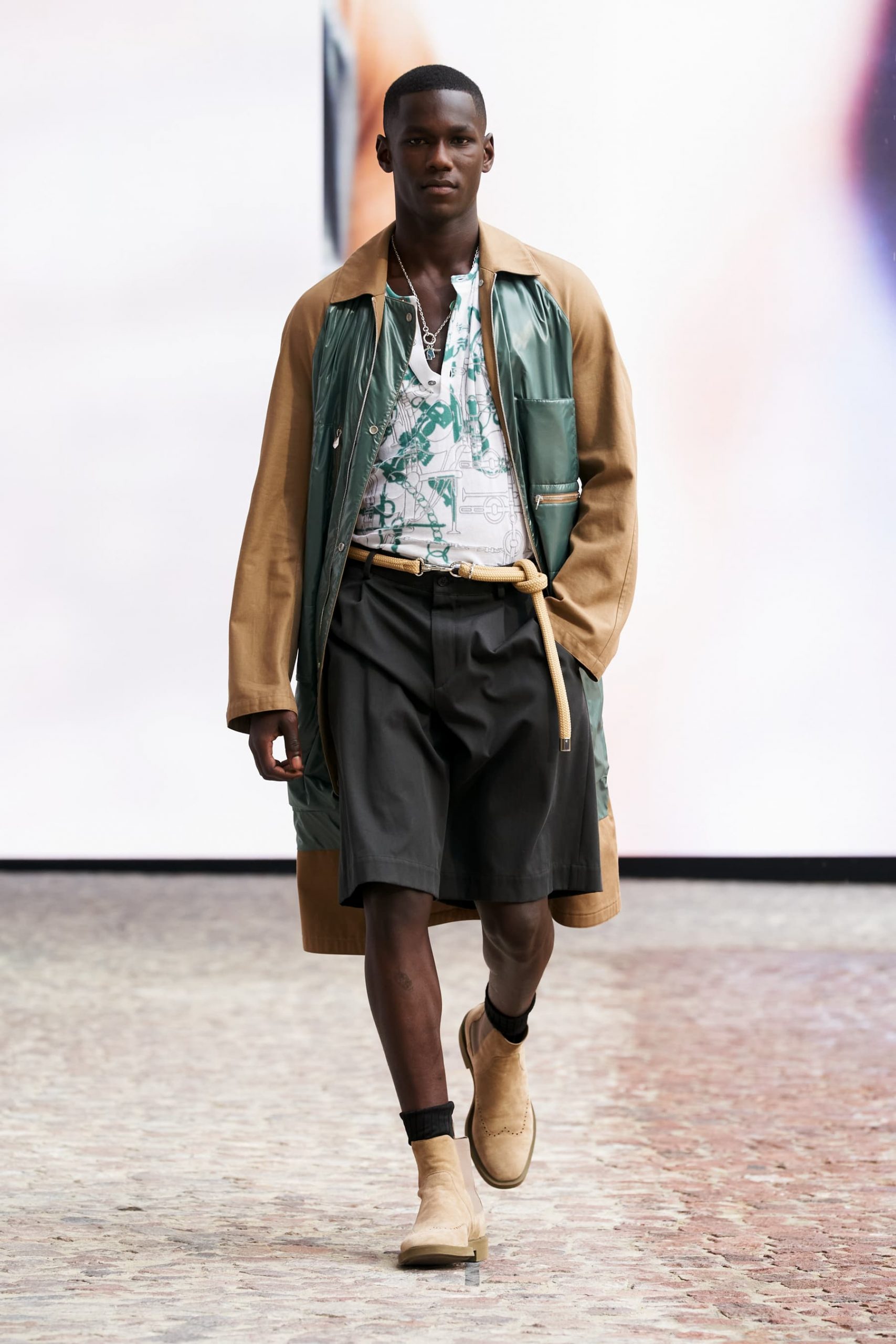
“The collection is an expression of grace, fluidity, and the shifting nature of our lives. It also has a touch of the spirit of sailing as well, as a response to our need to getaway. It aims to encourage people to get out and roam. We attempted to hone a freer, somewhat looser discourse,” Véronique Nichanian, the men’s artistic director, said of her concept.
Nichanian’s thinking evolved into the reality of this more practical and elegant collection. The show opened with a tan water repellent technical canvas coat with leaf green leather insets, a polo shirt in green floral puzzle motif, and dark brown cotton loose Bermuda shorts.
This spring show continues the signal shift into the more casual wear that Nichanian has imbued her Hermès menswear in more than a decade, foreseeing the change away from suiting and from a sense of formality.
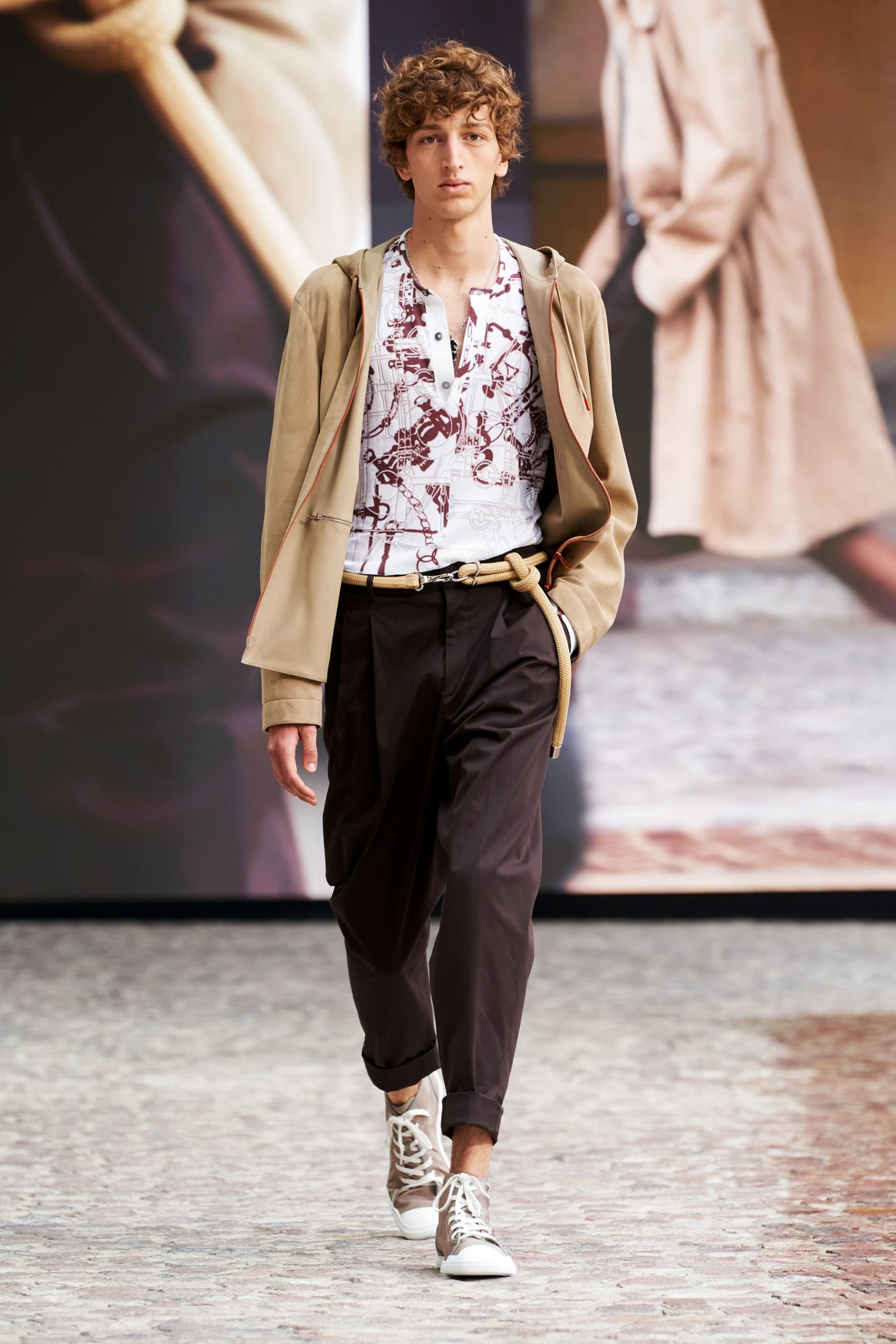
A light green zipper parka and khaki cotton pants, a camel hooded cashmere zipper ‘sweatshirt,’ a khaki knit elbow sleeve polo and brown pleated pants, or a wool cardigan in hues of violet and aqua blue hand dye and cotton fitted pants indicate the kinds of clothes men would embrace next summer.
A pale pink short sleeve shirt has the line stitching mimicking the rope lines of sailing boats – part of the idea of freedom and movement. Black leather and canvas parka are fully reversible, as are many of the outerwear pieces. A tan single breast pantsuit has a jacket with double panel linen.
Tailoring, in this shift to relaxed dressing, remains. However, Nichanian approached the constructions of the jackets with the absolute lightness, transforming a black slim single breast pleated pantsuit made with the delicate and thin gabardine wool into a pajama suit rather than a rigid business suit.
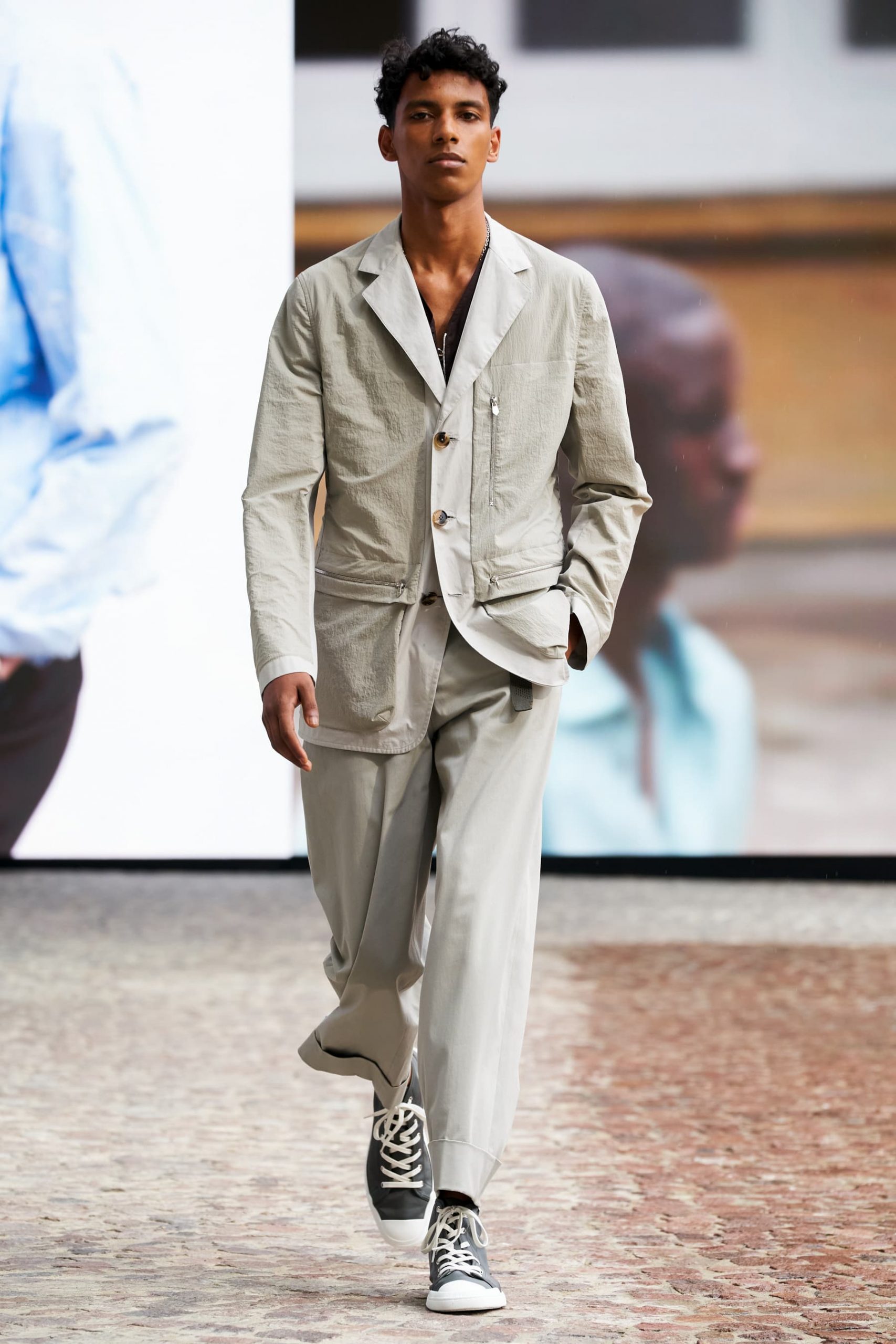
Elsewhere, a white 3-buttons jacket over a khaki polo and chocolate cotton pants looks as light as a regular cotton shirt. The heritage Mors et Gourmettes prints appear on a reversible grey and green cotton pullover and the Quadrige motif.
“The collection features rather neutral colors: hemp, algae, chocolate upon which stronger, more tender tones blossom, mingling here and there as if faded by the sun. Large flowers appear; colors burst into bright yellow, lettuce green. I also wanted to explore the legacy of certain in-house prints reinterpreted with new
techniques — mesh, for example,” Nichanian said of the muted monochrome feel throughout the show interrupted here and there with intense graphics on a wool knit sweater.
Innovation is key to the future at Hermès.
Innovation is the ingredient driving tradition to a new dimension, aiding the making the handicraft products better.
Every métiers at the house are transforming, adopting new technology to enhance the traditional artisanal craftsmanship at the center of this enterprise. Take the classic silk carré, for example. These scarves have permanently been colored on one side since 1937, leaving an uneven finish on the side not printed. But after years of researching, in 2020, master technicians at the Maison had finally unlocked the secret to print the scarves on both sides so that there can be different images on each side without ink seeping through the delicate fabric.
At times, the handiwork remains invisible to the eyes. A pale blue patch pocket work shirt is, in fact, rubberized lambskin with scribbled stitching, a way of hand stitching moving with the fabric that can create uneven stitch lengths.
Hard to notice, but the manner of hand stitching with white threads on this work shirt is quintessential to Hermès, or in the light aqua crocodile-skin shirt rendered as soft as if the shirt were woolen, not a rugged leather. Like a dye orange/pink pullover, the 3D round neck of the knit sweaters, like a dye orange/pink pullover, has a leather insert between the wool rib knit to create this volume and hold the circular shapes a process used a season earlier.
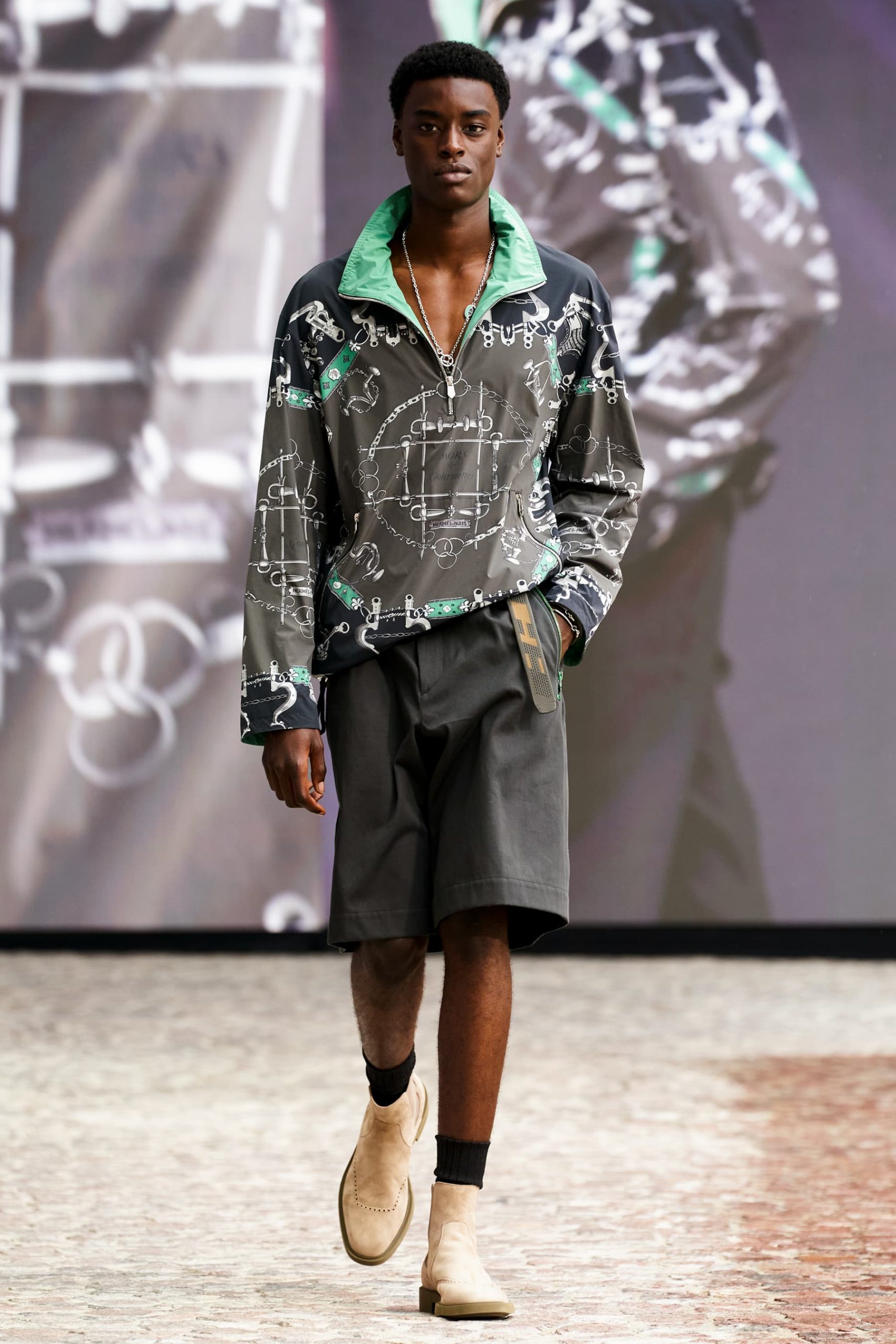
Zippers are plentiful in this collection, closing the patch pockets on a black jacket or allowing multiple openings on a green hooded parka with vertical front pocket zippers. The multiple steel zippers on this anorak look so inconsequential enough not to warrant a second glance. But it was Émile Hermès, the grandson of the founder, who brought the zippers back from a visit to the U.S. after WWI. He obtained an exclusive use for this useful device used mainly for military and industrial purposes into bags then into clothes. The fusion of innovation with utilitarian purpose is central to enhancing functionalities and adding that invisible allure to the products.
The staging of this physical show is itself an innovation in suggestions of the novel methodology of staging to foment different experiences.
The interaction with technology with the old ways of a live fashion show resulted in this augmented reality show with alternative views of the models made possible by new cameras and strategic shoot angles rather than a mere recording of a live moment, both for the small audience present on the ground and the vast audience viewing digitally.
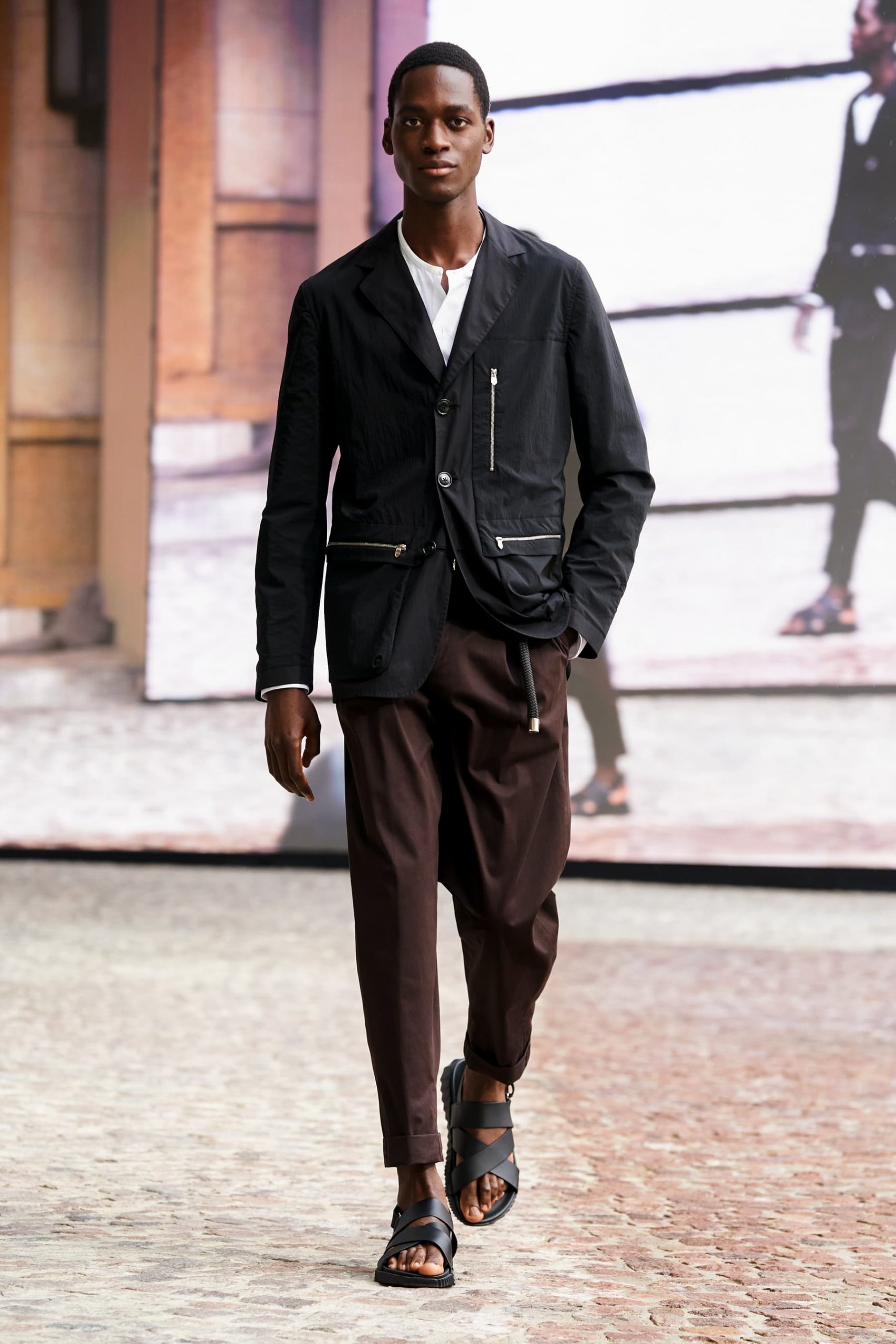
“I wanted everything to be instilled with freedom, momentum, a duality of spirit. Though open and liberated, at heart this collection is not opposed to a kind of bold formality,” Nichanian said.
This Hermès show is light years and several universes away from the loud noises and hypes of collaborations elsewhere in Paris. Or as the American novelist William Faulkner wrote at the end of his breakthrough roman The Sound and The Fury published in 1929: “full of sound and fury, signifying nothing,” recasting a line from Shakespeare’s Macbeth.
